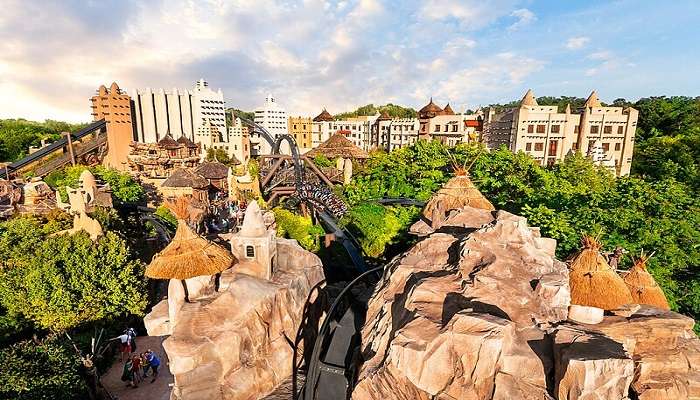Your Ultimate Guide To Harz National Park In 2026
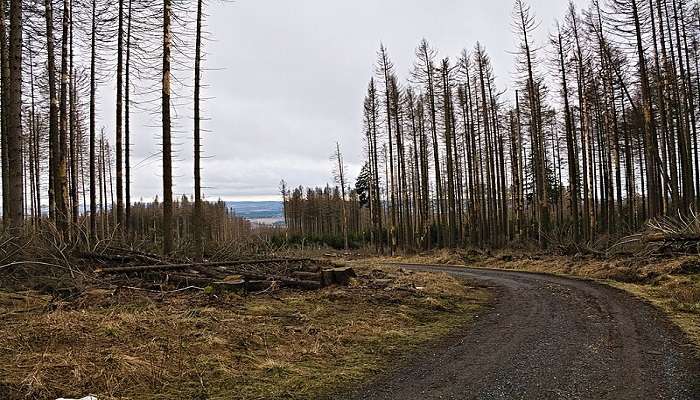
The Harz National Park marks the border between the German federal states of Lower Saxony and Saxony-Anhalt. More than 24,700 hectares of harbour landscapes are characterised by harshness and dense forests, ideally including the summit of Brocken, the highest northern peak in Germany. It is home to lynx, red deer, and some rare species of birds. It is home to various outdoor activities, such as hiking, cycling, and winter sports, and it remains filled with myths and legends, showing its natural beauty. This means it finally became the subject of interest for lovers of nature and historians.
About Harz National Park
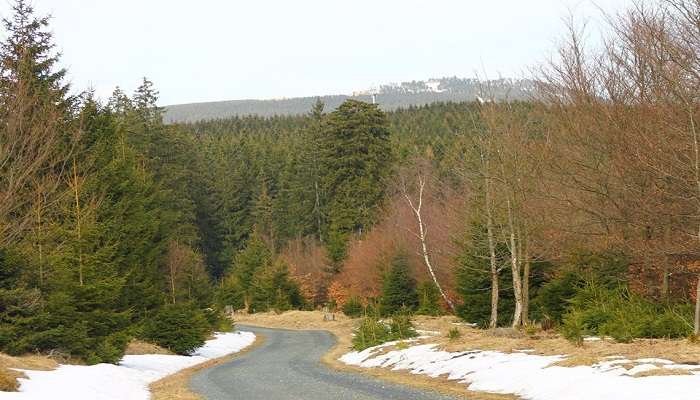
Harz National Park, located in the Harz mountain range in Germany, is a nature reserve and national park that offers stunning natural landscapes, rich biodiversity, and an array of outdoor activities. Spread across Lower Saxony and Saxony-Anhalt, the park is a popular destination for nature enthusiasts, hikers, and wildlife lovers.
The park is open to visitors throughout the year, and the timings can vary depending on the season. Typically, the park is open from early morning to evening, allowing visitors to explore its trails, viewpoints, and natural attractions. It’s best to check the official website or contact the park authorities to get the most up-to-date information on the opening hours and timings before planning your visit.
Also Read: Day Trips From Munich
Entry Fee And Location
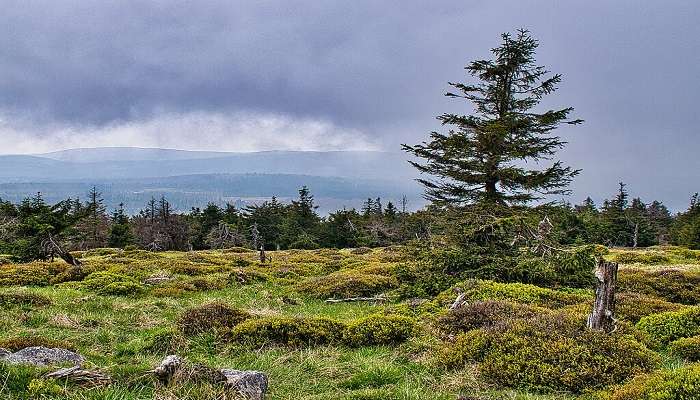
Harz National Park is known for its accessibility, as there is no entry fee. This makes it an attractive destination for budget-conscious travellers and families looking to enjoy the beauty of nature without additional expenses. However, certain facilities within the park, such as visitor centres, guided tours, or special events, may have associated costs. It’s a good idea to inquire about additional fees for specific activities or amenities.
The park is in a picturesque region, encompassing diverse landscapes, including lush forests, serene lakes, and cascading waterfalls. The varying topography of the Harz National Park provides habitats for a wide range of flora and fauna, making it a haven for wildlife. Visitors can spot native species of plants, animals, and birds while exploring the park’s numerous trails and observation points.
Things To Do In Harz National Park
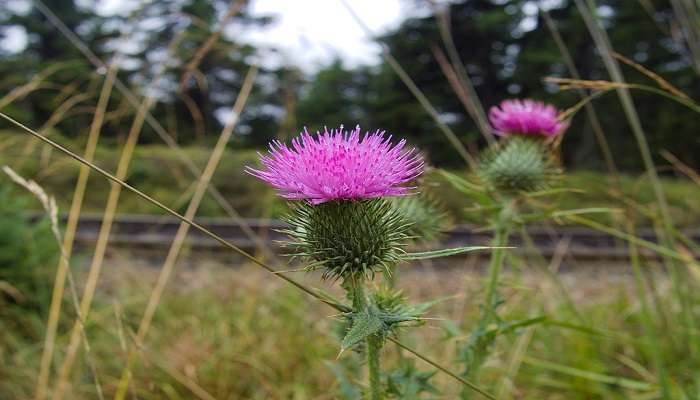
For those interested in outdoor adventures, the park offers ample opportunities for hiking, cycling, and wildlife observation. Well-marked trails cater to different difficulty levels, ensuring that both novice and experienced outdoor enthusiasts can find suitable routes to explore. Additionally, the park features designated picnic areas, camping grounds, and facilities for nature-based activities, allowing visitors to immerse themselves in the tranquillity and natural beauty of the surroundings.
Harz National Park is a remarkable destination for nature lovers and outdoor enthusiasts, offering a perfect blend of scenic landscapes, recreational activities, and conservation efforts. Whether you seek a peaceful retreat in nature or an active outdoor experience, the park’s accessibility, diverse ecosystems, and enchanting vistas make it a must-visit destination for anyone exploring the Harz region.
Related Post: Things To Do In Munich
Places To Visit Near Harz National Park
Find the top places you must explore in the Harz National Park and enjoy the serene environment.
1. Brocken Mountain
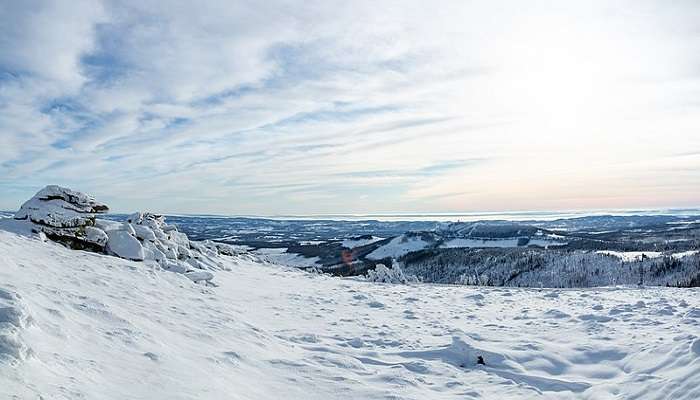
Brocken, or the so-called Blocksberg, is the highest peak in the Harz Mountains, rising to 1,141 metres above sea level. It is a legendary area—very related to witches and Walpurgis Night celebrations. The view from the top is splendid, with vistas of the countryside panorama, and on fine days, one can see up to 200 kilometres. There is also an interesting weather station and a museum depicting the mountain’s rich history.
How to Reach: Wernigerode and Drei Annen Hohne are two starting points for the Brocken Railway, which takes you to the top of the mountain. On the other hand, day walking takes you from different points to other points, such as from Schierke up to the Hohe Wand and back.
Timings: The mountain is always open
Entry Fee: No fee
Opening Hours: Open to visit at any time of the day
Nearest Railway Station: Wernigerode and Drei Annen Railway Station
Nearest Airports: Hannover Airport (HAJ) and Leipzig/Halle Airport (LEJ).
2. Wernigerode
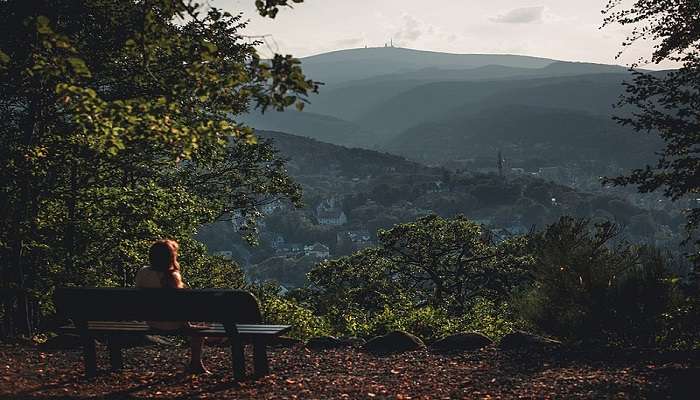
This mediaeval town lies on the northern slopes of the Harz Mountains and is called “Colourful Town in the Harz.” It is well known for its half-timbered houses, the imposing Wernigerode Castle on the hills overlooking the town, and the old town centre surrounding the town square. Wernigerode is also one of the accesses to the Harz National Park, which has several hiking paths into the park. Culturally, it combines historic charm with the lively pulse of local life.
How to Reach: Wernigerode is easily reached by railway from Hannover, Magdeburg, and other large cities. It is also accessible by car via the A36 motorway.
Timings: The town is open for all seasons
Entry Fee: It is free for everyone
Opening Hours: It is always open for everyone
Nearest Railway Station: Wernigerode Railway Station
Nearest Airport: Hannover Airport (HAJ) and Leipzig/Halle Airport (LEJ)
Related Post: Romantic Places In Munich
3. Quedlinburg

UNESCO recognized Quedlinburg as a World Heritage site because of its mediaeval architecture and cobbled streets. Over 1,300 half-timbered houses exist, some from the 16th century. The most important monuments of this town are the Collegiate Church of St. Servatius, a very fine piece of Roman architecture, and the Quedlinburg Castle. The historic importance and beauty of Quedlinburg’s surroundings make it a place to visit for people who love history or architecture.
How to Reach: It can be reached by train from cities such as Hannover, Magdeburg, and other towns. It can also be accessed by road using the A14 motorway.
Timings: The town is open for all seasons
Entry Fee: It is free for everybody.
Opening Hours: The town is open throughout the year. Some attractions, like the Collegiate Church of St. Servatius, have their opening hours.
Nearest Railway Station: Quedlinburg Railway Station
Nearest Airport: Hannover Airport (HAJ) and Leipzig/Halle Airport (LEJ) are the nearest major airports
4. Goslar
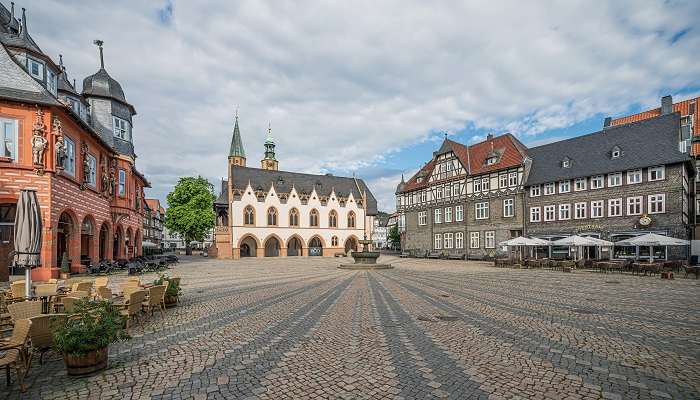
Yet another UNESCO World Heritage site, Goslar, is a small town that beguiles with its mining industry history. The Rammelsberg Mine, which was in operation for over 1,000 years, now hosts a museum where visitors can walk around the old mining facilities. Goslar’s Old Town resembles a labyrinth of narrow streets framed by half-timbered houses, mediaeval churches, and the dominating Imperial Palace. It is the perfect blend of cultural heritage and natural beauty in a town attached to the Harz Mountains.
How to Reach: Goslar is connected by railway, and as mentioned above, it can be reached by train from Hannover as well as from large cities such as Berlin, Hamburg, etc. It can also be accessed by car from the A7 motorway.
Timings: All days open
Entry Fee: Entry is free
Opening Hours: The town is open throughout the year. Some attractions, like the Rammelsberg Mine, are typically open from 9 AM to 6 PM.
Nearest Railway Station: Goslar Railway Station
Nearest Airport: Hannover Airport (HAJ) and Leipzig/Halle Airport (LEJ) are the nearest major airports
Related Post: Climbing In Munich
5. Bad Harzburg
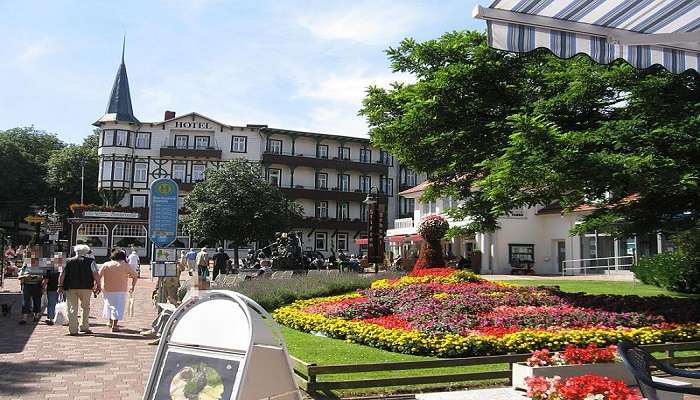
This city is a medicinal spa town at the north-most point of the Harz National Park. Known for its healing spring waters and wellness centres, this town is very much in demand for relaxation and rejuvenation. Bad Harzburg serves as a good starting point for excursions into the national park, with its many hiking paths leading deeper and deeper into the mountains.Right here, one has the chance to admire such attractions as the Baumwipfelpfad TreeTop Walk, from the bird’s-eye view of the forest standing above it, or to take a ride on the Burgberg Cable Car up to the ruins of an old castle where a beautiful panorama of the region awaits.
How to Reach: Bad Harzburg can be reached by train directly from Hannover and several other cities. It is also accessible by road via the A395 motorway.
Timings: All days open
Entry Fee: Entry is free
Opening Hours: Always open except for the Baumwipfelpfad attraction, which is open from 9 AM to 6 PM
Nearest Railway Station: Bad Harzburg Railway Station
Nearest Airport: Naples Hannover Airport (HAJ) and Leipzig/Halle Airport (LEJ)
You May Also Like To Read: Summer In Berlin
Harz National Park is located in the region of innumerable activities: legendary Brocken Mountain and mediaeval towns such as Wernigerode, Quedlinburg, and Goslar. Whether your interests lean toward mountain landscapes, historic UNESCO sites, or casual relaxation in spa towns like Bad Harzburg, the area is set up to balance culture, history, and outdoor fun just right for your experience. Hence, by booking a trip to Germany, one can understand the diversity of landscapes and cultural heritage that Harz offers.
For our editorial codes of conduct and copyright disclaimer, please click here.
Cover Image Credit: Leonhard Lenz for Wikimedia Common
Frequently Asked Questions About Harz National Park
When is the most preferred time to visit the Harz National Park?
Depending on the different factors, it is hard to determine the best time to visit Harz National Park. From May to September, it is good for hiking, observing, and greenery, while spring and summer are also good. October to November is preferred by tourists for enjoying the autumn season and the leaf coloration or autumn foliage. Winter is from December to February; during this period, people indulge in skiing and the snowy beauty idioms or fairytale look.
While it is easy to ask, 'How do I get to Harz National Park?' there is no straightforward answer as to how this area can be accessed.
The Harz National Park is accessible by car, train, and bus since it is connected to Wernigerode, Halberstadt, and Nordhausen. Hourly connections to the park are from neighbouring large cities, such as Hannover and Leipzig, to small towns, such as Wernigerode, Goslar, and Bad Harzburg, which are entry points to the park. Small local buses and shuttles assist in getting down closer to the various trails and points of interest in the park from these towns.
Are there facilities for self-drive, or are there docent-driven tours around the various parts of the park?
Yes, it is possible to take a guided tour through Harz National Park, ranging from nature trails to wildlife spotting to cultural and historical tours. Many of the guided tours are conducted in several languages and offer a great deal of interesting information on topics such as the natural environment, wildlife, and historical significance of this park.
Can one get to Mount Brocken's top without ever walking up it?
Yes, absolutely! In addition to the very popular climb, one can get to the Brocken Mountain with the historic steam narrow gauge railway Brocken Railway. The train ride is quite scenic, mostly the countryside, and of course, this mode of travel is very comfortable for anyone who simply does not have the heart for a hike.
What kind of wildlife can one expect in Harz National Park?
Harz National Park teems with red deer, wild boar, lynx, and numerous bird species, including the black stork and peregrine falcon. The occurrence of various endemic species also makes the national park home to excellent insect and plant life. The best time to watch animals is in the early mornings and late afternoons when they are very active.

Unveil the hidden treasures of the globe and turn every travel dream into reality. As a Content Writer, I am passionate enough to craft stories from ancient wonders to modern marvels. My words paint the picture-perfect itinerary for unforgettable experiences. Let my words be your trusted guide to immerse in the diverse culture and discover the beauty of the unknown.




